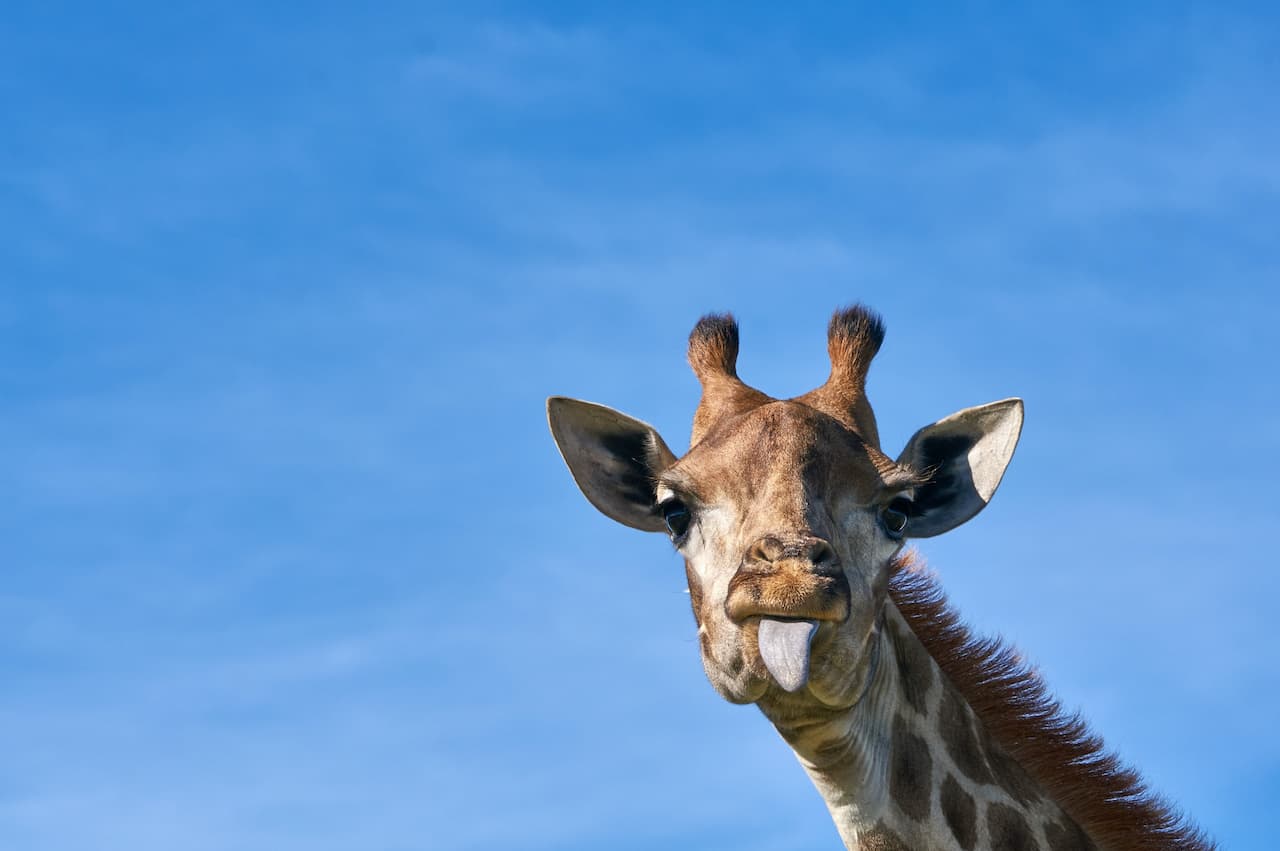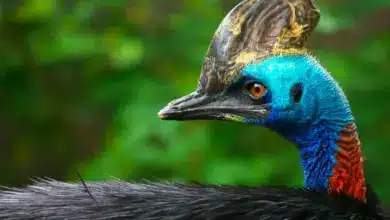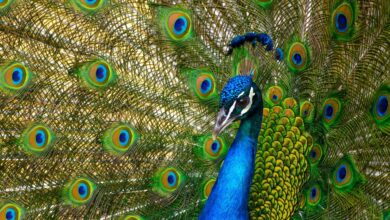Facts About Giraffes
Adult giraffes may reach heights of 20 feet (6.1 meters), making them the tallest living land mammal. Many people are aware of their tall stature but know nothing more about these friendly giants.
Giraffes, despite their towering appearance, like to remain in the background while other animals steal the show.
Unfortunately, giraffes have been historically undervalued by everyone from the general public to scientists and environmentalists (although, fortunately, that has begun to change in recent years).
These amazing megafaunas are in danger of extinction in the wild and require our protection.
It is possible that giraffes originated in Europe.
Research indicates that modern giraffes emerged in southern central Europe around 8 million years ago, despite the fact that they are presented solely found in sub-Saharan Africa.
According to research published in the Transactions of the Royal Society of South Africa, they migrated to Africa from Asia through Ethiopia some 7 million years ago and found more success there than in their homeland.
The researchers concluded that changes in flora, specifically the transition from forest to a mixture of savanna, woodland, and shrubs, were the primary forces behind the development of giraffes.
Since the tallest ancestors of the giraffes would have had an easier time reaching the tree leaves where the giraffes eat, their genes are more likely to have been passed along.
Through natural selection, these gigantic beings grew to consume vegetation that was inaccessible to smaller creatures. Males’ long necks in combat are also selective pressure drivers.
Being tall helps giraffes spot potential threats from far away, while their strength and size make them difficult to bring down by predators.
A giraffe’s neck is six feet long.
The neck, which may be as long as six feet and weigh as much as 600 pounds, is easily the most recognizable feature of this species. The length of the Giraffe’s neck provides the idea of a sophisticated anatomical mechanism below.
Each of these giant animals’ seven neck vertebrae is only approximately 10 inches long and is attached to another vertebra through a ball and socket joint, allowing it to bend in a wide range of motion.
The Giraffe’s enormous neck needs lungs eight times the size of a human’s in order for it to breathe. Their lengthy tracheas trap dead air, causing them to breathe at a significantly slower rate.
So prior breaths are not entirely expelled before the animal begins breathing anew.
The Giraffe Family Includes a Wide Variety of Different Species (Including One Non-Giraffe)
For a very long time, giraffes were considered to be a single species comprised of nine different subspecies. It’s still how the IUCN categorizes them, although not everyone agrees.
Two species were proposed to exist in a 2001 research, while six were found in a 2007 investigation. Other investigations have gone as high as eight, although many experts today acknowledge three or four giraffe species.
Although the giraffes are the sole surviving representatives of the genus Giraffa, they are joined by another genus in the family Giraffidae.
The okapi is the only member of this genus; it’s a forest-dwelling ungulate with a somewhat extended neck. Studies have found that the common ancestor of giraffes and okapis existed around 11.5 million years ago.
Tallest Living Mammal
Maximal Adult Height of the World’s Tallest Living Mammal. The giraffe stands as the world’s tallest living animal. Males often reach a height of around 18 feet. The females top out at a still impressive 14 feet, 2 inches shorter than the men.
When night falls, giraffes hum softly to one another.
It was formerly thought that giraffes made no sounds other than low grunts and snorts. Many researchers assumed that giraffes couldn’t produce audible noises because of their long necks.
However, in 2015, a group of scientists reported hearing giraffes at three different zoos hum to each other in the evenings.
The researchers say these hums are rich in harmonic structure, having a deep and persistent sound, but they admit that very little is known about them.
They may function as contact calls to assist the animals to keep in touch after dark, according to the study’s authors, but their communicative value remains unknown.
Massive and Goofy Hearts
The enormous, 25-pound hearts of giraffes pump blood at a high enough pressure to reach the brains at the top of their long necks. In addition, their blood veins have built-in valves that stop blood from flowing backward due to gravity.
Most people are shorter than newborn giraffes.
Adult giraffes may weigh up to 400 kilograms (880 pounds), while newborns average 6 feet (1.8 meters) in height (100 kg). The calf must experience a long fall to the earth since the mother giraffe, whose legs alone are roughly 6 feet long, gives birth standing up.
Within an hour of birth, it is already able to stand on its skinny legs. Having the ability to quickly adapt is crucial. Young giraffes don’t fare as well as their taller and heavier parents, with almost half dying during their first year of life due to predation.
Giraffes are fairly quiet beings
A larynx (or voice box) is present in these creatures, but it is rarely used. When one of them is scared, the others will typically hear a snort and take precautions. They also make a soft humming noise at night, which may serve as a communication tool within the herd.
A giraffe and you share the same number of neck vertebrae, 7. Adult giraffes tower over the average basketball hoop by a factor of two.
Considering that much of their height comes from their necks, it’s reasonable to believe that they have more neck vertebrae than humans have. All animals, including giraffes and humans, have seven cervical vertebrae.
The spinal column of a giraffe differs somewhat from that of a human. A giraffe’s neck vertebrae may grow to be as long as 11 inches (28 cm), which is greater than the length of most people’s complete necks.
Everything about giraffes is incredibly lengthy
All of the Giraffe’s features, especially its eyelashes, are extremely lengthy. This helps protect their golf-ball-sized eyes from dust. They are placed laterally on the Giraffe’s head, giving it excellent peripheral vision.
Although they do not have complete color vision, they are able to distinguish between red, orange, yellow-green, and violet.
The Giraffe’s Long, Discerning Tongue
A giraffe’s food is mostly made up of acacia leaves and twigs, as well as other tree-top vegetation. Beyond the obvious advantages of their length of leg and neck, their tongues also serve a crucial role in allowing them to obtain this scarce food.
The blue-purple tongues of giraffes may be up to 45 centimeters in length. They are also prehensile, which allows giraffes to pick acacia leaves out from between the thorns with ease.
Conclusion
Giraffes are found in the sub-Saharan areas of Africa, where they are native. Giraffes prefer meadows and broad savannahs where they may roam freely and scan the horizon for potential threats.
These animals travel in large groups in search of dense underbrush and leafy trees. Giraffes are able to adjust to these shifts in their environment by expanding their leaf and twig repertoire (but Acacias often seem to be their favorite).
The African Giraffe population has declined by 40 percent in the past decade owing to human activity (mostly poaching) and environmental factors (primarily the destruction of their natural habitat).
Only approximately 20% of newborn Giraffes reach adulthood because of predators including Lions, Hyenas, Leopards, and African Wild Dogs.





